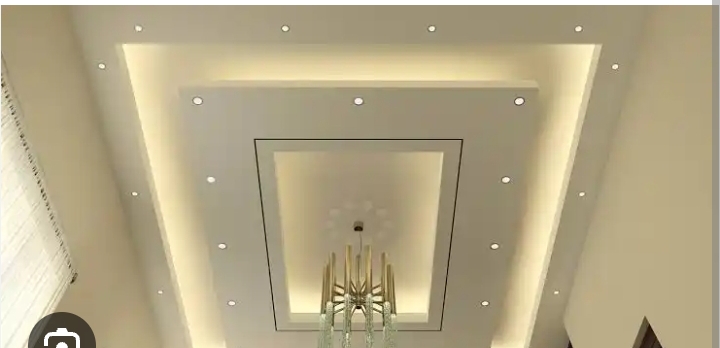gypsum board ceiling price in nigeria
Ceilings play a crucial role in the aesthetics, functionality, and overall appeal of a space. Among the various ceiling options available, gypsum board ceilings have gained popularity for their versatility and cost-effectiveness. In this article, we will delve into what gypsum board ceilings are, their benefits, and potential disadvantages.
Table of Contents
What is a Gypsum Board Ceiling?
A gypsum board ceiling, often referred to as a drywall or plasterboard ceiling, is a construction element made from gypsum plaster sandwiched between two layers of paper. These panels come in various sizes and thicknesses, making them suitable for different applications in both residential and commercial buildings.
Gypsum board ceilings are installed by attaching the panels to a metal or wood framework, creating a smooth and uniform surface. Once installed, they can be painted, textured, or decorated to suit the design and purpose of the room.
Benefits of Using a Gypsum Board Ceiling
Cost-Efficiency: One of the primary advantages of gypsum board ceilings is their affordability. They are generally more budget-friendly compared to other ceiling materials, making them a popular choice for construction and renovation projects.
Ease of Installation: Gypsum board ceilings are relatively easy to install, which can save both time and labor costs. The panels are lightweight and can be cut to size, allowing for quick and efficient installation.
Versatility in Design: These ceilings offer versatility in design and finish. They can be painted in any color, textured for added aesthetic appeal, or even used for decorative purposes with molding and trim.
Fire Resistance: Gypsum is inherently fire-resistant, making gypsum board ceilings a safe choice for buildings where fire safety is a concern. They can help contain the spread of fire and provide valuable escape time.
Acoustic Properties: Gypsum board ceilings can be enhanced with acoustic insulation to improve soundproofing within a room. This feature is particularly valuable in spaces where noise control is essential, such as theaters or conference rooms.
Disadvantages of Using a Gypsum Board Ceiling
Susceptibility to Moisture: Gypsum board ceilings are not suitable for areas prone to high humidity or moisture, as they can warp, sag, or develop mold and mildew over time. In such environments, alternative materials like PVC or metal ceilings may be more appropriate.
Durability: While gypsum board ceilings are cost-effective, they are not as durable as some other ceiling materials. They can be easily damaged by impact or pressure, requiring repairs or replacement.
Complex Installation for Curved Surfaces: Creating curved or complex ceiling designs with gypsum boards can be challenging and may require skilled craftsmanship.
Weight Limitations: Gypsum board ceilings have weight limitations, which means they may not be suitable for supporting heavy fixtures or equipment without additional structural support.
gypsum board ceiling price in nigeria
The cost of a gypsum board ceiling varies depending on the size of the ceiling, the type of gypsum board used, and the labor costs in your area. However, you can expect to pay between ₦5,000 and ₦10,000 per square meter for a gypsum board ceiling.
When considering gypsum board ceilings, one of the first questions that often arises is their cost. Several factors influence the overall cost of a gypsum board ceiling installation:
Material Cost: Gypsum board, commonly known as drywall, is the primary material used for these ceilings. The cost of gypsum board itself can vary based on thickness, quality, and brand.
Labor Costs: Labor costs for installing gypsum board ceilings depend on the complexity of the design and the skill level of the workers.
Additional Materials: Besides the gypsum board itself, you may need screws, joint compound, tape, and primer. These additional materials add to the overall cost.
Ceiling Design: Elaborate ceiling designs with intricate details or curves can increase costs significantly compared to simple, flat ceilings.
Location: Regional pricing differences can affect the cost of materials and labor.
How long does it take to install a gypsum board ceiling?
The duration of a gypsum board ceiling installation varies depending on several factors:
Ceiling Size: Larger ceilings naturally require more time to install than smaller ones.
Complexity: The complexity of the design, including curves, arches, or unique features, can extend the installation time.
Number of Workers: The more skilled workers involved, the faster the installation process.
Preparation: Proper preparation of the space, including removing old ceilings or addressing structural issues, can add time to the project.
Drying Time: Gypsum board installation involves several stages, including taping, mudding, and drying. Drying time can affect the overall duration.
As a rough estimate, a standard-sized room with a straightforward gypsum board ceiling installation may take 2 to 3 days. More intricate or larger spaces could take longer.
How do I insulate a gypsum board ceiling?
Insulating a gypsum board ceiling is essential for soundproofing and maintaining a comfortable indoor environment. Here are the steps to insulate a gypsum board ceiling:
Select Insulation Type: Choose the appropriate insulation material for your ceiling. Common options include fiberglass batts, mineral wool, or foam board.
Install Vapor Barrier: Before adding insulation, install a vapor barrier to prevent moisture from damaging the gypsum board.
Install Insulation: Place insulation material between the ceiling joists, ensuring a snug fit. For better performance, consider double-layering or using soundproofing materials.
Seal Gaps and Joints: Seal any gaps or joints in the insulation to prevent air leakage, which can compromise energy efficiency.
Install Drywall: Once the insulation is in place, install the gypsum board ceiling as usual. Be sure to use appropriate screws and techniques to minimize sound transmission.
Properly insulating a gypsum board ceiling can improve energy efficiency and create a quieter, more comfortable living space.
In conclusion, gypsum board ceilings are a popular choice for many construction projects due to their affordability, ease of installation, and versatility in design. However, their susceptibility to moisture, limited durability, and weight limitations should be considered when choosing them for a specific application. Careful assessment of project requirements and proper installation can help maximize the benefits of gypsum board ceilings while mitigating their disadvantages.

